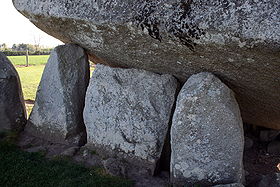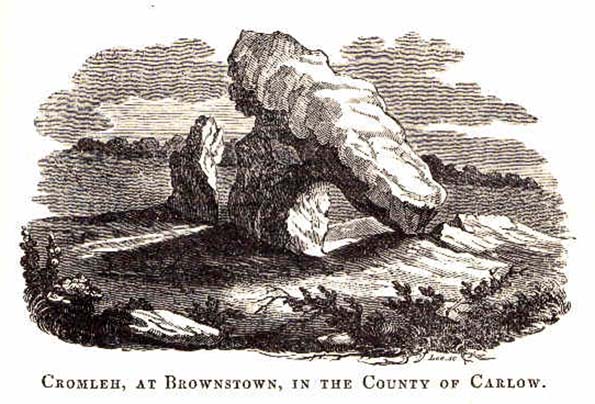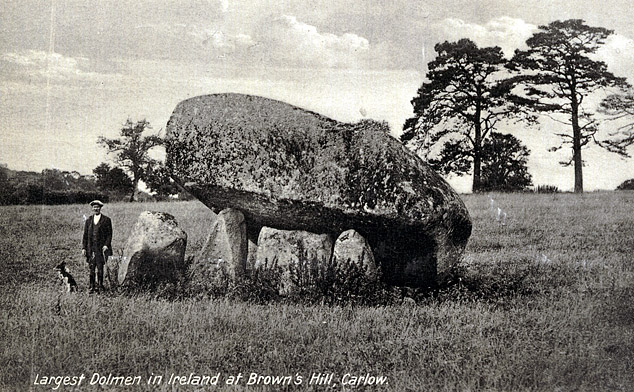The Browne's
Hill Dolmen is a 'portal tomb' dating from the 4th - 5th millennium B.C. (2). It
has a very large granite capstone measuring 4.7 metres x 6.1 metres x 2 metres.
The capstone rests on two portal stones, a door stone and a prostrate slab. The
dolmen or cromlech is a type of pagan sepulchral monument.
Although the capstone is said to be the largest to be
found in Europe (It has been calculated to weigh around 150 tons)(2), Arguably
larger than this is the now broken capstone of the
Bajouliere Dolmen in France.
(Map of Site:
How to get there)
('Chnoc an Bhr�naigh', 'Brennanstown Dolmen', 'Kernanstwoen Cromlech')
This
megalith is called the 'Browne's Hill' Dolmen because
it is sited on a hill on which sits the
former estate house of the Browne family.
 This
site remains unexcavated, so very little is known about this dolmen except
that it was once supported by three stones at the front; a gate stone, and
two portals (See photo, right).
This
site remains unexcavated, so very little is known about this dolmen except
that it was once supported by three stones at the front; a gate stone, and
two portals (See photo, right).
The dolmen stands alone in the middle of a large
field, and the stone is not local, suggesting either that it was carried
here, or it travelled here during the ice-age. It is
known as Browne's hill Portal Tomb, so-called because the entrance to
the burial chamber was flanked by two large upright stones (orthostats)
supporting the granite capstone, or roof, of the chamber. The granite capstone
is thought to have been covered by an earthen mound and a gate-stone
blocked the entrance. At Browne's hill both portal stones and the
gate-stone are still in situ; the capstone lies on top of the portals
and gate-stone and slopes to the ground away from the entrance. Not much
additional information is available on Browne's hill because it has never
been excavated.
A fourth upright stands close by and could be the remains of a
forecourt. The extent of the chamber cannot be determined.
Gallery of Images:


(Other
Dolmens)
(Other
Prehistoric Irish Sites)